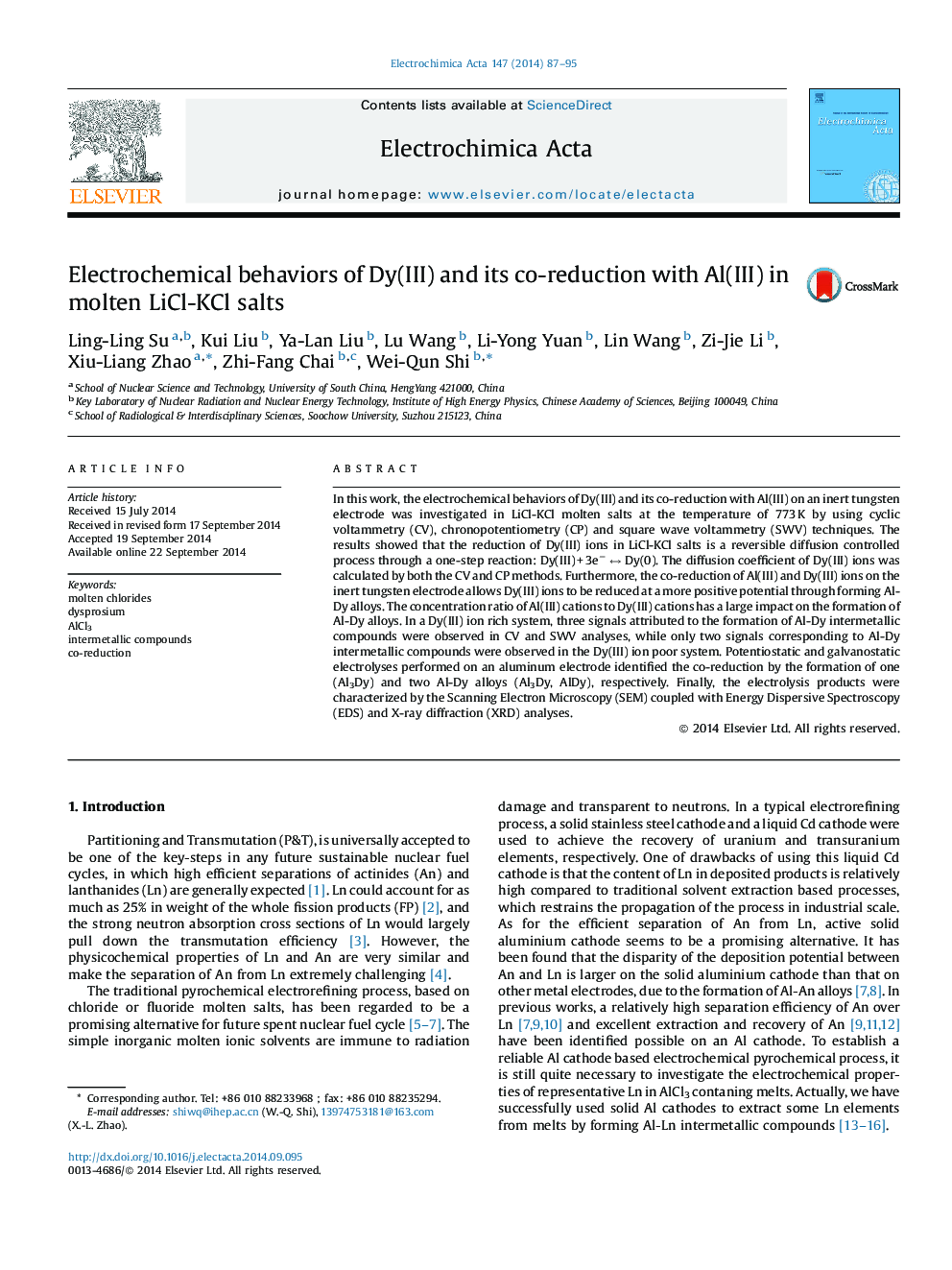| Article ID | Journal | Published Year | Pages | File Type |
|---|---|---|---|---|
| 185040 | Electrochimica Acta | 2014 | 9 Pages |
In this work, the electrochemical behaviors of Dy(III) and its co-reduction with Al(III) on an inert tungsten electrode was investigated in LiCl-KCl molten salts at the temperature of 773 K by using cyclic voltammetry (CV), chronopotentiometry (CP) and square wave voltammetry (SWV) techniques. The results showed that the reduction of Dy(III) ions in LiCl-KCl salts is a reversible diffusion controlled process through a one-step reaction: Dy(III) + 3e− ↔ Dy(0). The diffusion coefficient of Dy(III) ions was calculated by both the CV and CP methods. Furthermore, the co-reduction of Al(III) and Dy(III) ions on the inert tungsten electrode allows Dy(III) ions to be reduced at a more positive potential through forming Al-Dy alloys. The concentration ratio of Al(III) cations to Dy(III) cations has a large impact on the formation of Al-Dy alloys. In a Dy(III) ion rich system, three signals attributed to the formation of Al-Dy intermetallic compounds were observed in CV and SWV analyses, while only two signals corresponding to Al-Dy intermetallic compounds were observed in the Dy(III) ion poor system. Potentiostatic and galvanostatic electrolyses performed on an aluminum electrode identified the co-reduction by the formation of one (Al3Dy) and two Al-Dy alloys (Al3Dy, AlDy), respectively. Finally, the electrolysis products were characterized by the Scanning Electron Microscopy (SEM) coupled with Energy Dispersive Spectroscopy (EDS) and X-ray diffraction (XRD) analyses.
